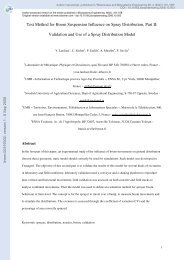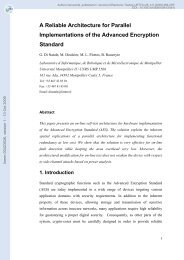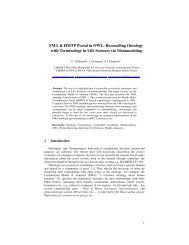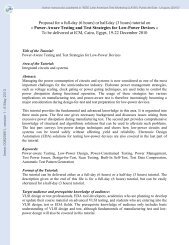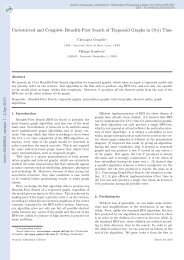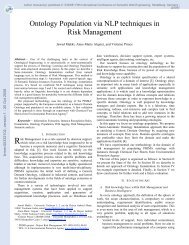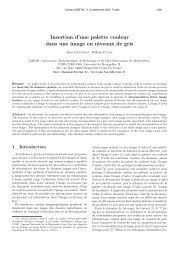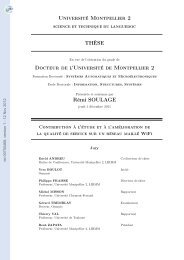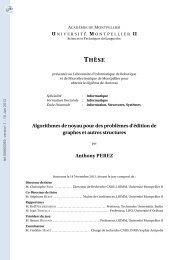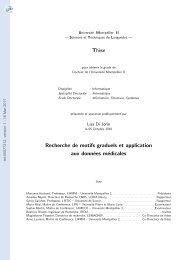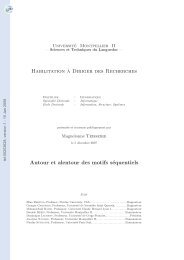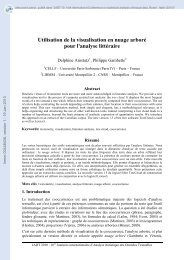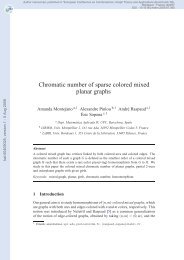A guaranteed obstacle avoidance guidance system: The safe ...
A guaranteed obstacle avoidance guidance system: The safe ...
A guaranteed obstacle avoidance guidance system: The safe ...
Create successful ePaper yourself
Turn your PDF publications into a flip-book with our unique Google optimized e-Paper software.
hal-00733826, version 1 - 19 Sep 2012<br />
Auton Robot (2012) 32:177–187 185<br />
Fig. 6 System velocities<br />
Fig. 7 Evolution of y1, and minimum distance to <strong>obstacle</strong><br />
Fig. 8(c) shows the evolution of the new virtual target TOA,<br />
living on SOA and positioned on the intersection of SOA and<br />
PRCOA. Note that the path following virtual target TPF continues<br />
its progression on the path, converging to the closest<br />
point between the robot and the path, as expected with<br />
the path following virtual target controller (11). Figure 8(d)<br />
shows a change in COA, while another part of the <strong>obstacle</strong> is<br />
getting closer. Note the orientation of the absolute path following<br />
heading ψPF that still crosses the SOA, that keeps the<br />
<strong>obstacle</strong> <strong>avoidance</strong> behavior engaged. <strong>The</strong> vehicle is then<br />
following the <strong>obstacle</strong>, as shown at Fig. 8(e). In fact, in this<br />
situation, the <strong>system</strong> is memorizing the actual COA, which is<br />
updated only if a closer detection occurs. If for any reason,<br />
the <strong>obstacle</strong> vanishes (e.g. dynamic <strong>obstacle</strong>) the <strong>system</strong> will<br />
keep considering the actual COA and turn around it until<br />
the condition of disengagement form Obstacle Avoidance to<br />
Path Following is filled. This behavior is illustrated Fig. 8(f),<br />
where the robot is contouring a salient angle of the <strong>obstacle</strong>.<br />
In this situation, the desired <strong>system</strong> trajectory is a portion of<br />
the circle SOA. Figure 8(g) shows the instant when the orientation<br />
of the path following desired heading ψPF leaves the<br />
circle SOA, consequently disengaging the Obstacle Avoidance<br />
behavior, and tracking now the path following virtual<br />
Fig. 8 Snapshots of the simulation<br />
target TPF. Note that during the Obstacle Avoidance behavior,<br />
the path following virtual target was still continuing its<br />
progression on the path. <strong>The</strong>n, as described at Fig. 8(h) the<br />
robot meets the path following virtual target TPF, after having<br />
contoured the <strong>obstacle</strong>.<br />
4 Conclusion<br />
This paper proposes a solution to the control of movement<br />
of a unicycle-type robot, including path-following and <strong>obstacle</strong><br />
<strong>avoidance</strong>, while respecting the actuation saturation



